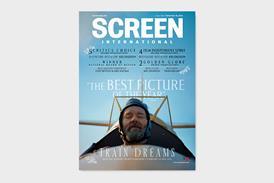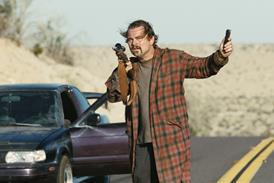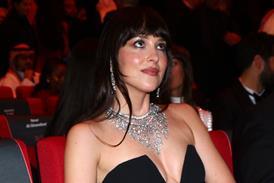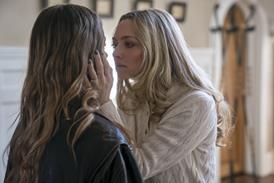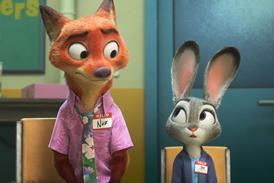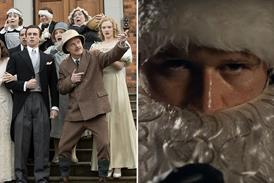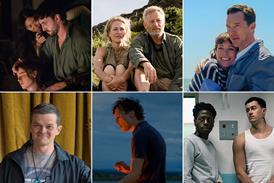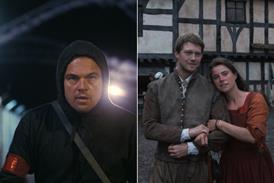Observational documentary starts in 2022, taking a Wiseman-like approach to a country at war
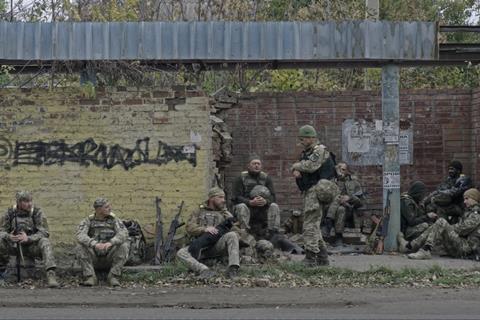
Dirs: Yelizaveta Smith, Alina Gorlova, Simon Mozgovyi. Ukraine/Austria/France. 2025. 111mins
Everyday life in Ukraine is the subject of the documentary Militantropos, which observes the quotidian goings-on of not only Ukrainian soldiers but also regular citizens living in a country at war. Directed by Yelizaveta Smith, Alina Gorlova and Simon Mozgovyi, credited together as Tabor Collective, the project started filming in 2022 and takes a Wiseman-like approach in that it purely observes, editorialising mainly through framing, shot choices and editing. The camera- and soundwork is often striking and the result absorbing, though this kind of relentlessly downbeat work, however timely, will probably see more big-screen action at festivals than in commercial theatres following its bow in Directors’ Fortnight.
There is a sense that everyone we see in the film is at war on some level
Though there is no voice-over or much else in terms of introductory text, Militantropos does start with an on-screen breakdown of its title, which was developed by the directors with philosopher Oleksandr Komarov. It is, the film suggests, a combination of ’milit’, Latin for ‘soldier’, and ‘antropos’, Greek for ‘human’, with a further explanation suggesting that it is a ’persona adopted by humans when entering a state of war’.
There is indeed a sense that everyone we see in the film is at war on some level. The soldiers, most obviously, because they are fighting, but also the regular folk whose daily lives have been impacted on many levels: some are forced to leave, others return to their homes in ruins after their area has been liberated again. If there’s one overarching message, it is that war leaves no one indifferent or untouched. While that might seem like an obvious conclusion, in these precarious times it is good to be reminded why for many years, at least in most parts of the Western world, war had become a kind of taboo.
There are few recurring characters, no obvious chronology nor much in terms of geographical indications, though the material is roughly organised into three sections. The first part seems to concentrate on the early days of the invasion, when people crowded train stations as many tried to leave the country, politicians answered questions in the street, and civilians were taught how to use army-grade weapons. The immediate cost of war is explained in one shot, as an excavator has turned a piece of forest into a makeshift cemetery. The shot is contrasted with another in which an improvised wooden cross is seen, stuck in the mud, with some sweets in wrappers at its base no doubt left by grieving parents or friends.
The second part goes from surprise and anger to a reaction, whether military or from ordinary citizens. What’s striking about the military response is how much of it has become ’an office job’, with high commanders looking at screens of satellite or drone footage and making tactical decisions from a certain distance – though there are still trenches and more direct combat too. Many of the images are unheimlich, suggesting life goes on (or at least tries to) even in absurd circumstances. Trenches lie abandoned in a park full of cherry blossoms and playing kids, while a stoic farmer tills his land — an image several millennia old — as a modern artillery shell is visible in the foreground. Fighting may have ended here – but for how long and at what price?
The closing sequences try to suggest something about the indomitable spirit of both nature and the Ukrainian people and contains some of the most mesmerising material, with strong combinations of well-framed shots and soundwork (the score is often more of a drone-like electronic affair). Some of these moments are haunting but also create new questions. Is war being aestheticised? Or is this life in Ukraine, the spirit of resistance and the search for beauty amidst terror and violence? Would Militantropos still be considered cinema if it looked more like the evening news? Would it feel more authentic? What are the tools of cinema but images and sound trying to create meaning? And do they even make sense in a conflict such as this one?
Smith, Gorlova and Mozgovyi have announced two further films using the material they have shot over the past three years, so more answers might be forthcoming.
Production companies: Tabor, Mischief Films, Les Valseurs Bordeaux
International sales: Square Eyes, info@squareeyesfilm.com
Producers: Eugene Rachkovsky, Ralph Wieser, Nabil Bellahsene, Justin Pechberty, Damien Megherbi
Written by: Yelizaveta Smith, Alina Gorlova, Simon Mozgovyi, Maksym Nakonechnyi
Cinematography: Viacheslav Tsvietkov, Khrystyna Lizogub, Denis Melnyk
Editing: Yelizaveta Smith, Simon Mozgovyi, Alina Gorlova
Music: Peter Kutin

